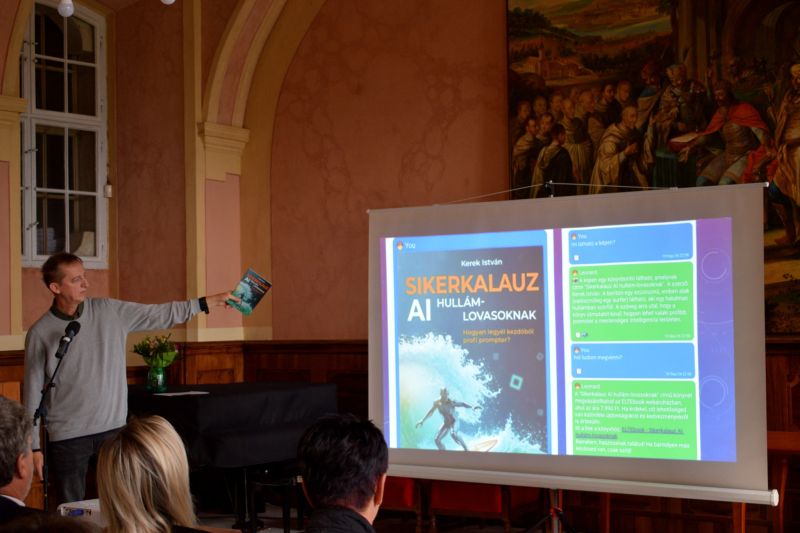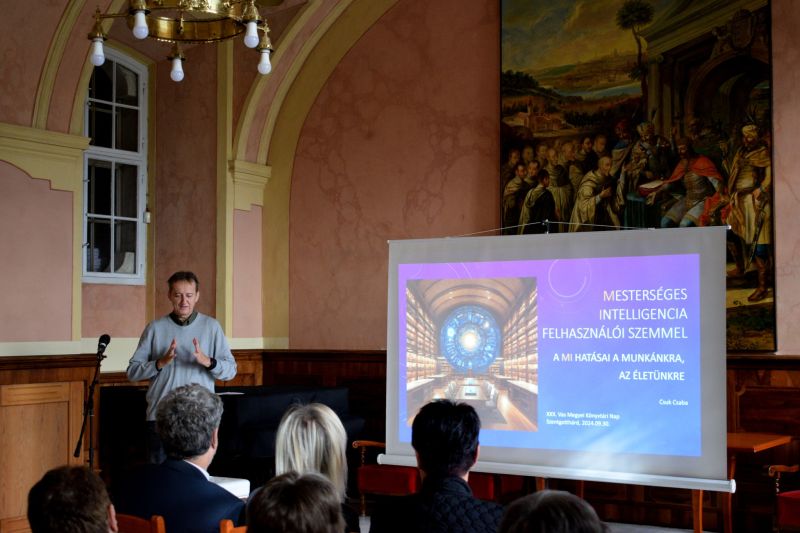The Book of Your Life project was carried out between January and September 2024 in cooperation with the ELTE University Library and Archives, the ELTE, the International Strategy Office and the University Strategy Office.
The Europe Challenge is an annual programme to bring together libraries and their communities across Europe in a local challenge. This year, 55 institutions from 24 European countries took part, Hungary being the first country to do so. The programmes involved both a project responding to a local community problem, strengthening the community-building and community-organising power of libraries, and a learning programme, in which both the library and a representative of the community participated in online and face-to-face skills and knowledge development workshops, as well as mentoring sessions.
The ELTE University Library and Archives and the Student Union's Book of Your Life project has created a new, flexible and comfortable community space with a community kitchen, a learning space for individual, pair and group work, and a learning space for students, through the joint work of librarians and students. The new community space also offers the opportunity for student exhibitions: the opening event included the opening of James Clifford Viloria's PhD student photography exhibition Liminal Quarters, which presents the dormitory life of foreign students studying at ELTE, and the current exhibition Traditions Transcended – An Artistic Voyage by Kamila de Oliveira Sousa. The library will continue to welcome applications from students wishing to exhibit at kabinet@lib.elte.hu.
In our new community space, inaugurated at the beginning of the year, we organised a number of activities: a special event was the UNICYCLE upcycling workshop, where we raised awareness about sustainability by refurbishing furniture intended for the space. Our community space also hosted a series of intercultural training sessions for staff and fellow students who come into contact with international students and help them in their daily lives, aimed at developing understanding and cooperation between participants from different cultures. In addition, the Cultural Connection Day, organised by the Student Council, and the Liminal Quarters student club nights provided an excellent opportunity to contribute to the mental well-being of international students by building personal connections and a sense of belonging.
The aim of the Book of Your Life (BoYL) project, to support the cultural integration of international students coming to ELTE, to encourage contacts and to continuously improve the library's services based on the needs of the student community, remains of strategic importance for ELTE University Library and Archives and the community space will continue to host exhibitions, book launches, international events and workshops.
The Director General of the ELTE University Library and Archives, Dr. Kulcsár Szabó Ernőné Gombos Annamária, in her speech at the closing event, emphasized that the closing of the project is in fact the beginning of new challenges in the life of the library in its efforts to promote the inclusion of international students. The University Library and Archives, as a user-centred cultural institution, remains committed to building community, supporting education and research, and promoting cultural empowerment of students, and is open to future opportunities for collaboration with students in line with the University's strategy to achieve common goals.
More information about the Book of Your Life project


